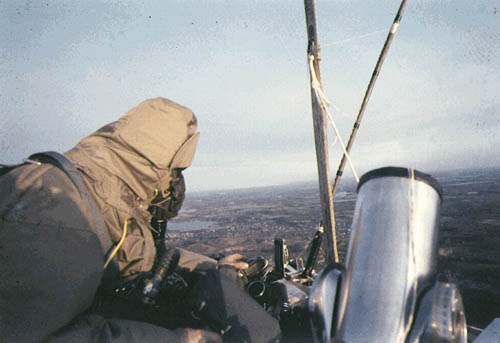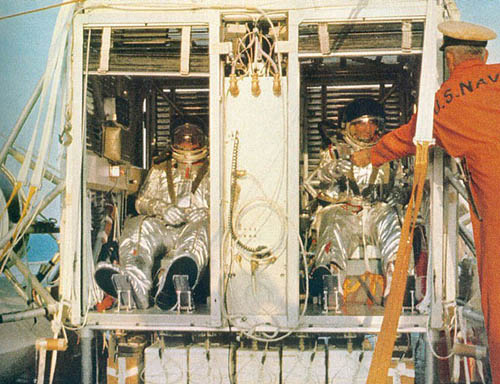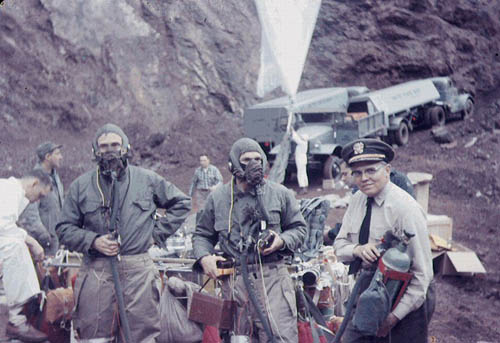Strato Lab
 [Image: Strato Lab; photo via Gregory P. Kennedy].
[Image: Strato Lab; photo via Gregory P. Kennedy].The Strato Lab project was a manned, high-altitude balloon project from the 1950s that ascended with its crew above 80,000 feet several times. The pilots performed scientific observations there, including taking observations of Venus through an on-board telescope.
The specific experiments interest me less, however, than the architectural possibilities of inhabited balloons in the stratosphere. The Strato Lab was a kind of sky-throne, regal and airborne over the continents below.
 [Image: Strato Lab as sky-throne; photo via Gregory P. Kennedy].
[Image: Strato Lab as sky-throne; photo via Gregory P. Kennedy].Historian Gregory P. Kennedy has the story over on his website; he includes technical details about how the Strato Lab worked, as well as some thoughts about its position in design history.
- Strato Lab had two inward opening hatches mounted in flat frames. Having two hatches made normal entry and exit easier and facilitated rapid exit in case of an emergency. Simple air pressure sealed the hatches. Within the cabin, a pressure equivalent to 17,000 feet was maintained. When the balloon ascended beyond that altitude, the pressure difference between the inside and outside atmospheres forced the hatches against their frames. A silicone O-ring around the outer diameter of each hatch created a pressure-tight seal. During descent, the hatches opened automatically.
"Strato Lab retained the configuration and certain design elements of balloon gondolas of the 1930s," Kennedy writes. "Thus, it bridged the gap between pressurized gondola designs of the 1930s and modern spacecraft."
 [Image: Strato Lab; photo via Gregory P. Kennedy].
[Image: Strato Lab; photo via Gregory P. Kennedy].All of this takes on a further, slightly different air of possibility when seen in the context of recent questions about the future of air travel in light of Iceland's Eyjafjallajokull volcano; if the Katla volcano—ten times the size of Eyjafjallajokull and less than six miles away from it—were to erupt next, for instance, the European airline industry as it currently exists could be put out of business for weeks or months at a time. The New York Times took this as a cue to ask what might be next: high-speed rail, dirigibles, airships...? And that, of course, is if a future supervolcano doesn't simply cause extinction.
But perhaps high-altitude—and "super-high-altitude"—balloons could be both destination and route: airborne rooms enthroned atop wind systems accessible to civilians for the first time, future platforms for housing at the forecourt of the sky. You build a pressurized village of linked pods, spanning acres—the architectural legacy of Ant Farm—on some land in Nebraska; the final step clips oversized polyethylene balloons to roof-hooks, and then there you go: hauling your project to its rightful site, skybound, where an emerging race of balloonists will evolve massive lungs 95,000 feet above the Great Plains.





Comments are moderated.
If it's not spam, it will appear here shortly!
Post a Comment